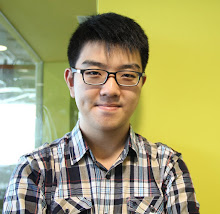Erno Rubik
Erno Rubik was born in Budapest, Hungary during World War II. His mother was a poet, his father an aircraft engineer who started a company to build gliders. Rubik studied sculpture in college, but after graduating, he went back to learn architecture at a small college called the Academy of Applied Arts and Design. He remained there after his studies to teach interior design.The Cube
Rubik's initial attraction to inventing the Cube was not in producing the best selling toy puzzle in history. The structural design problem interested Rubik; he asked, "How could the blocks move independently without falling apart?" In Rubik's Cube, twenty-six individual little cubes or cubies make up the big Cube. Each layer of nine cubies can twist and the layers can overlap. Any three squares in a row, except diagonally, can join a new layer. Rubik's initial attempt to use elastic bands failed, his solution was to have the blocks hold themselves together by their shape. Rubik hand carved and assembled the little cubies together. He marked each side of the big Cube with adhesive paper of a different color, and started twisting.
An Inventor Dreams
"It was wonderful, to see how, after only a few turns, the colors became mixed, apparently in random fashion. It was tremendously satisfying to watch this color parade. Like after a nice walk when you have seen many lovely sights you decide to go home, after a while I decided it was time to go home, let us put the cubes back in order. And it was at that moment that I came face to face with the Big Challenge: What is the way home?" - Erno Rubik
That was how the Cube as a puzzle, was invented in the spring of 1974, when the twenty-nine year old Rubik discovered it was not so easy to realign the colors to match on all six sides. He was not sure he would ever be able to return his invention to its original position. He theorized that by randomly twisting the Cube he would never be able to fix it in a lifetime, which later turns out to be more than correct. He began working out a solution, starting with aligning the eight corner cubies. He discovered certain sequences of moves for rearranging just a few cubies at a time. Within a month, he had the puzzle solved and an amazing journey lay ahead..
First Patent
Rubik applied for his Hungarian patent in January 1975 and left his invention with a small toy making cooperative in Budapest. The patent approval finally came in early 1977 and the first Cubes appeared at the end of 1977. By this time, Erno Rubik was married.
Two other people applied for similar patents at about the same time as Rubik. Terutoshi Ishige applied a year after Rubik, for a Japanese patent on a very similar cube. An American, Larry Nichols, patented a cube before Rubik, held together with magnets. Nichols' toy was rejected by all toy companies, including the Ideal Toy Corporation, which later bought the rights to Rubik's Cube.

No comments:
Post a Comment